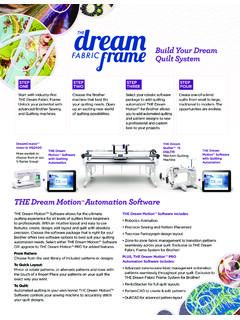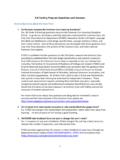Transcription of Class Dismissed study guide - Media Ed
1 Class DISMISSEDHOW TV FRAMES THE WORKING CLASSWRITTEN BY ANITA PALATHINGALEDITED BY BILL YOUSMANMEDIA EDUCATIONFOUNDATIONSTUDY GUIDECONTENTSNOTE TO TEACHERS ..pg. 03 THE Media LITERACY CIRCLE OF MATTERSKey for Discussion & AMERICAN DREAM MACHINEKey for Discussion & THE MARGINS TO THE MIDDLEKey for Discussion & HAVE CLASSKey for Discussion & CLOWNSKey for Discussion & CLASSKey for Discussion & ACTIONKey for Discussion & 21 Class DISMISSEDHOW TV FRAMES THE WORKING CLASS03 NOTE TO TEACHERSThis study guide is designed to help you and your students engage and manage the information present-ed in this video.
2 Given that it can be difficult to teach visual content and difficult for students to recall detailed information from videos after viewing them the intention here is to give you a tool to help your students slow down and deepen their thinking about the specific issues this video addresses. With this in mind, we ve structured the guide so that you have the option of focusing in depth on one section of the video at a time. We ve also set it up to help you stay close to the video s main line of argument as it unfolds. The structure of the guide therefore mirrors the structure of the video, moving through each of the video s sections with a series of key summary points, questions, and assignments specific to that Discussion Starters are designed to inspire preliminary discussion about the issues the video addresses prior to Points provide a concise and comprehensive summary of each section of the video.
3 They are designed to make it easier for you and your students to recall the details of the video during Class discus-sions, and as a reference point for students as they work on for Discussion & Writing provide a series of questions designed to help you review and clarify material for your students; to encourage students to reflect critically on this material during Class discussions; and to prompt and guide their written reactions to the video before and after these discus-sions. These questions can therefore be used in different ways: as guideposts for Class discussion, as a framework for smaller group discussion and presentations, or as self-standing, in- Class writing assignments ( as prompts for free-writing or in- Class reaction papers in which students are asked to write spontaneously and informally while the video is fresh in their mind).
4 Assi gnments for each section encourage students to engage the video in more depth by conducting research, working on individual and group projects, putting together presentations, and composing formal essays. These assignments are designed to challenge students to show command of the material presented in the video, to think critically and independently about this material from a number of different perspec-tives, and to develop and defend their own point of view on the issues at THIS VIDEO IN THE CLASSROOM View the video prior to showing it to your students. Review the study guide and choose which exercises you will use with your students.
5 Use the previewing activities to help your students prepare for the ideas presented by the video. Encourage active listening. Because the content of this video is likely to elicit emotional responses from the students, it is important that the students engage with each other in ways that ensure everybody has the opportunity both to speak and to be listened to. It is advised that you set guide lines for active listening in advance of classroom discussions. Check out MEF s handout, Techniques for Active Listening ( ). Have the students keep a journal. It will be an effective place for them to explore their own attitudes and opinions and to record their observations about the Media .
6 Review and discuss the handout How to be a Critical Media Viewer ( handouts/ ). Incorporate activism and advocacy into your Media literacy study . They are an important part of empowering students. 04 THE Media LITERACY CIRCLE OF EMPOWERMENTAWARENESSS tudents learn about the pervasiveness of the Media in their discuss the forms and contents of the Media s various messages as well as the intent of most Media to persuade an develop their own opinions about the negative and positive effects of the Media and decide to do something about it this can be in the form of praise for healthy Media , protest of unhealthy Media , or development of campaigns to educate others with regard to the Media , to change Media messages.
7 Learn how to work with Media and use their own Media to develop and publicize messages that are healthy, constructive, and all too often ignored by our gain access to the Media radio, newspaper, internet, television, etc. to spread their own mes-sage. This in turn leads to further awareness of the Media and how it works, which leads to a deeper analysis and so Media LITERACY CIRCLE OF EMPOWERMENT EXPLAINED1. Diagram and explanation adopted from s GO GIRLS! Curriculum, (c) 1999 ( )AC CESSto mediaAD VO CA CYtell your storyACTIVISM protest/praiseAN ALYSISof contentAWARENESSof media05 OVERVIEWC lass Dismissed : How TV Frames the Working Class examines television s portrayal of working Class people, from early images of the late 1940s to those on display in recent situation comedies, dramas, and reality pro-grams.
8 The film focuses primarily on two issues television s under-representation of working- Class people and their concerns, and the stereotypes that are used when they are represented at representation of group identities on television has always been problematic especially in the case of minorities and the underprivileged, such as people of color, gays and lesbians, and the working Class . In the United States, commercial television is a huge corporate enterprise, and the backgrounds and interests of those who control the industry have little in common with those of the working Class who hap-pen to be the majority of the American people.
9 Class Dismissed argues that television misrepresentations and stereotypes help to both create and reinforce negative perceptions of the working Class . To provide support for this contention, the video presents his-torical evidence in the form of clips culled from decades of popular television programming, accompanied by analysis offered by scholars and writers such as Herman Gray, Robin Kelley, Stanley Aronowitz, Barbara Ehrenreich, and others. The film also acknowledges that changing representations of the working Class on television may be crucial but it cannot work as an end in itself. In order to make a difference, Media criticism and activism must go hand in hand with the fight for economic and social justice in the lives of real working people.
10 Class Dismissed : HOW TV FRAMES THE WORKING CLASS06 PRE-VIEWING EXERCISES1. Discuss the ownership of television in the United States as you know it is it public, private, or both? How is it funded? 2. Do you watch television primarily for entertainment? Why else? 3. How would you define Class ? Is American society a Class -based one? 4. What is your understanding of the population of the United States in terms of race? What percentage of the country is white, and what percentage African American? Who would comprise people of color ? 5. What percentage of the population are immigrants?
![Requiem For The American Dream [Transcript]](/cache/preview/a/b/8/4/f/8/1/2/thumb-ab84f812664524b6923d6df2929c06cf.jpg)
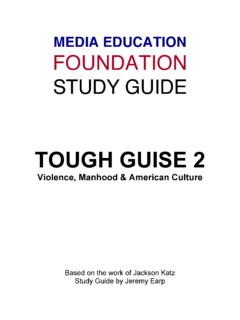
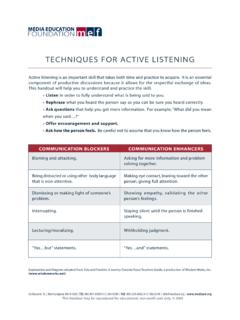
![Tough Guise 2 [Official Transcript] - Media Ed](/cache/preview/c/3/b/5/2/d/3/e/thumb-c3b52d3e6a3437c17d6d8ad6485bd936.jpg)
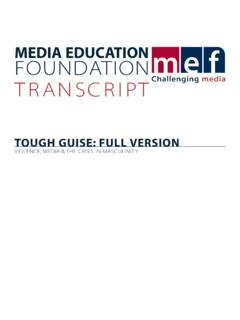
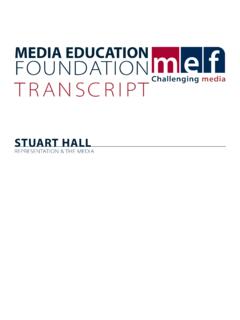
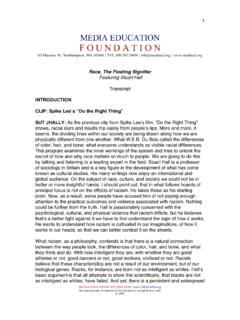
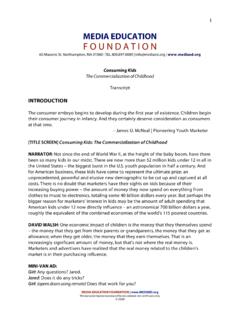
![Advertising at the Edge of the Apocalypse [Transcript]](/cache/preview/d/e/7/c/d/b/4/6/thumb-de7cdb46ab24a926068f936b79251872.jpg)
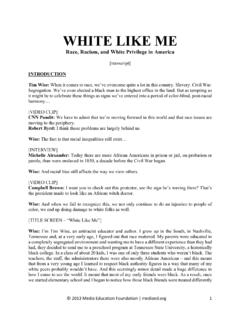
![1974 21. Computer Lib /Dream Machines 21. [Introduction]](/cache/preview/7/2/f/1/e/f/1/e/thumb-72f1ef1e2d4480ce810ad06c99b89afc.jpg)




